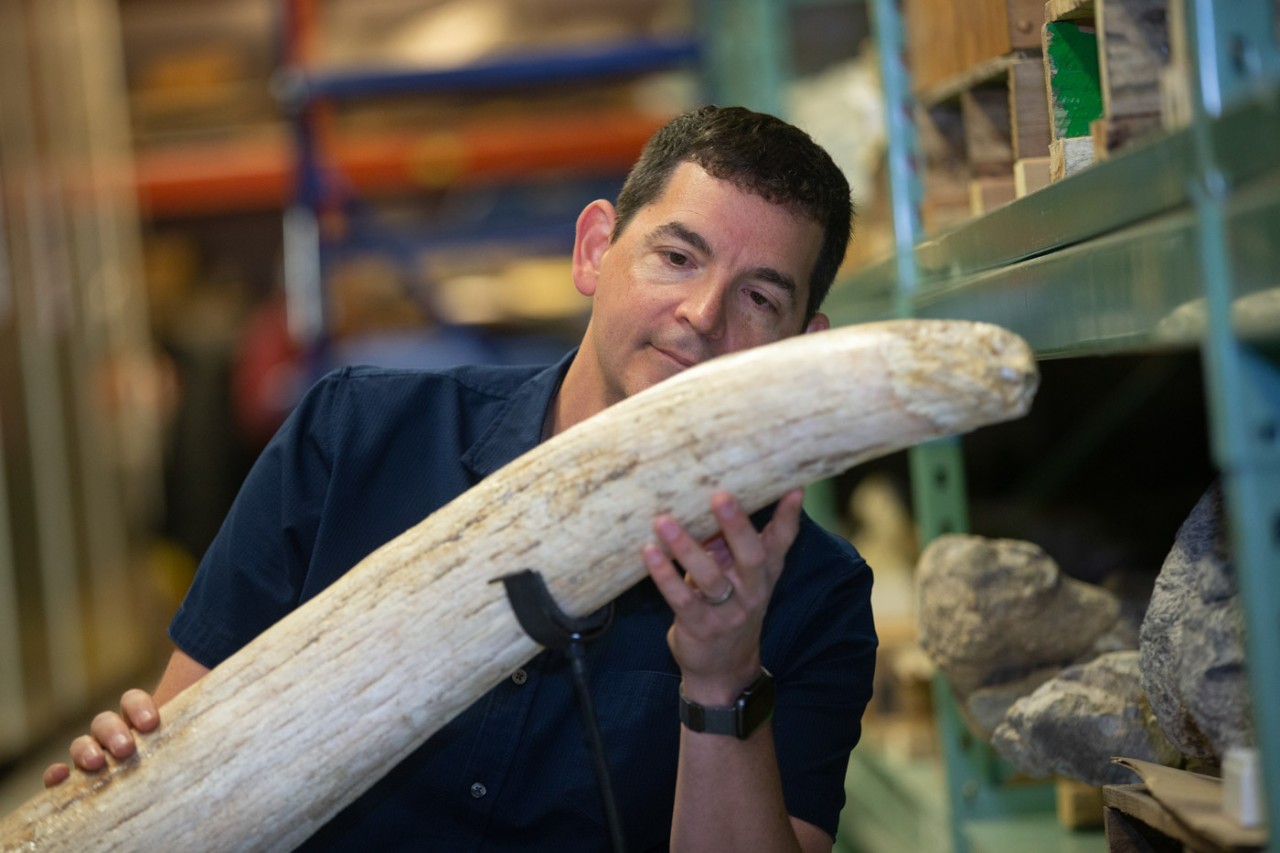
The New York Times: Woolly mammoth left diary in her tusk
UC professor explains how we are learning more about Ice Age behemoths
The New York Times talked to a geosciences professor about what we can learn about mammoths from their tusks.
UC College of Arts and Sciences paleoecologist Joshua Miller studies animals such as caribou and extinct mammoths and mastodons to learn more about environmental changes over time. For example, he and his research partners in 2022 revealed the epic annual migration of male mastodons that roamed hundreds of miles each year across what is now Indiana.
The Times reported on a new study by the University of Alaska that examined the life of a mammoth nicknamed Elma. From her tusks, which grow throughout the mammoth's lifetime, researchers can use isotopic analysis to follow her movements across the landscape.
They learned that she was born in what is now the Canadian Yukon but moved hundreds of miles west into central Alaska where she likely was killed by people. Her remains were recovered in an ancient hunting and fishing camp.
Miller was not part of the study but has conducted similar research on ancient mammoth and mastodon remains in his lab at UC. Miller said as we learn more about the lives of individual animals, we can recreate the fascinating life history of the species.
“There are answers out there,” Miller told the Times. “We’re just starting to build it. And that’s exciting.”
Read the New York Times story.
Featured image at top: UC Assistant Professor Joshua Miller examines a mastodon tusk at the Cincinnati Museum Center's Geier Collections and Research Center. Photo/Andrew Higley/UC Marketing + Brand

UC Assistant Professor Joshua Miller poses with a bronze mammoth outside the Cincinnati Museum Center's Geier Collections and Research Center. Photo/Andrew Higley/UC Marketing + Brand
Related Stories
News Cincinnati loved in 2025
January 2, 2026
The story of prohibition bootlegger George Remus was among WLWT's favorite segments in 2025. UC Law Professor Christopher Bryant spoke with journalist Lindsay Stone about Remus using a temporary insanity defense during a murder trial.
What to know about this year’s big tax changes
January 2, 2026
Local 12 reported that taxpayers can expect some major changes this tax season. Gary Friedhoff, adjunct instructor at the University of Cincinnati’s Carl H. Lindner College of Business, recently spoke to Local 12 about how to avoid surprises.
Study finds police officers face higher long-term health risks
January 2, 2026
J.C. Barnes, a University of Cincinnati professor, is interviewed by Spectrum News about new research showing that the physical and psychological demands of law enforcement can contribute to earlier deaths.
